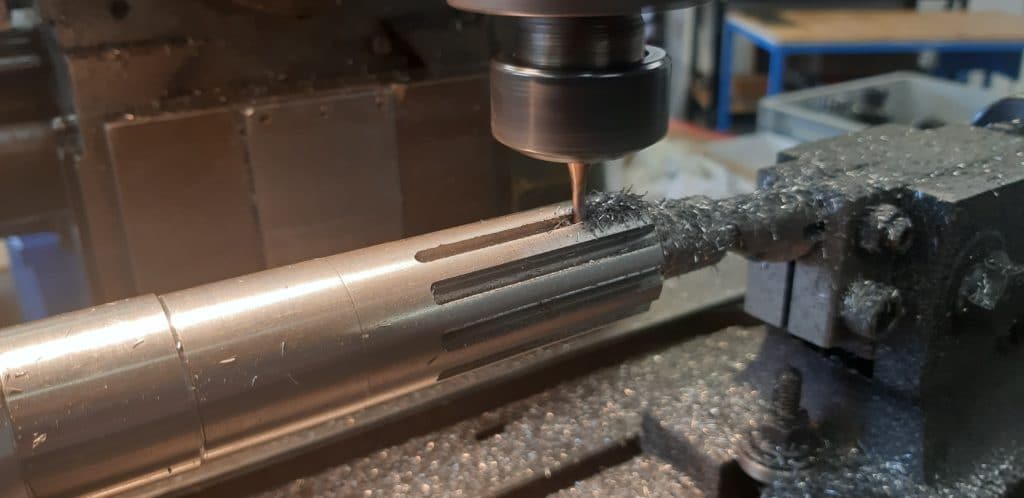Definition of cutting parameters
Definitionofcutting parameters

The first thing to remember before starting work is that machining is a profession in its own right, so there's no room for improvisation!
If you're a beginner, you need to start by learning the trade through training or by consulting a professional, and perfect your experience with hours of machining before claiming to "tickle the hundredth"!
In many cases, it's the operator who has to reconsider the way he works, depending on the tool at his disposal: for example, you won't take the same depths of cut when using a 1T, 15Kw stationary milling machine or a 300Kg, 1500W drill-milling machine. This may seem obvious, but in reality it's not, because for the manufacture of certain types of part, against all expectations, the latter will be more efficient and productive than the former!
To get the most out of your machine and cutting tools, here are a few basic formulas for determining cutting parameters directly related to:
- The material you're machining;
- The cutting tool you're using (HSS or carbide);
- The machine's rigidity and type (traditional or CNC);
- The machining operation: roughing or finishing;
- The lubrication (ancillary or directly from the tool center).
1/ Spindle rotation frequency
Whether it's a lathe or a milling machine, you have a range (inverter) or a choice of spindle speed(s) (gearbox or stepped pulleys). Here's the mathematical formula for determining the rotation frequency:
N = (1000 x Vc) / (¶ x D)
N: rotation frequency in rpm
D: diameter of workpiece (lathe) or diameter of milling cutter or cutting tool (milling machine)
¶: constant: 3.14159
Vc: cutting speed in m/min
La notion de vitesse de coupe (Vc, exprimée en m/min) est extrêmement importante car déterminante dans le calcul de la fréquence de rotation. De plus, cette variable doit être déterminée directement par l’opérateur en fonction des travaux qu’il effectue.
En règle générale, sur machine conventionnelle :
Ebauche ARS :
5<Vc<20 m/min pour les aciers jusqu’à 100 kg/mm², inox, aluminium 7075
20<Vc<45 m/min pour les laitons, bronze UE12, aluminium 2017
Finition en HSS :
20<Vc<45 m/min pour les aciers jusqu’à 100 kg/mm², inox, aluminium 7075
40<Vc<60 m/min pour les laitons, bronze UE12, aluminium 2017
Ebauche au carbure :
60<Vc<150 m/min pour les aciers jusqu’à 100 kg/mm², inox, aluminium 7075
100<Vc<180 m/min pour les laitons, bronze UE12, aluminium 2017
Finition au carbure :
120<Vc<220 m/min pour les aciers jusqu’à 100 kg/mm², inox, aluminium 7075
140<Vc<260 m/min pour les laitons, bronze UE12, aluminium 2017
2/ Feed speed
Feed rate is expressed by the speed at which the part (milling) or the slide (turning) moves:
Vf = fz x Z x n
Vf: Feed rate (mm/min for milling and mm/rev for turning)
fz: Chip thickness in mm (depends mainly on the material to be machined, and the type of HSS or carbide tool)
Z: Number of cutter teeth (for turning, take value 1)
n : Rotation frequency in rpm
Average fz values:
HSS machining:
0.010 to 0.020 for steels up to 100 kg/mm²
0.010 to 0.015 for brass, bronze UE12, aluminium
Carbide machining:
0.015 to 0.025 for steels up to 100 kg/mm²
0.02 to 0.03 for brass, bronze UE12, aluminium
Remarques :
En général, en opération d’ébauche on utilise :
> des vitesses de coupe (Vc) inférieures à celles utilisées en finition ;
> des vitesses d’avance importantes.
Inversement, pour obtenir des états de surface aux indices de rugosité faible (Ra<0.8), on utilise des vitesses de coupe (Vc) plus élevées en finition et des vitesses d’avance (Vf) plus faibles.
Particular care must always be taken when clamping the workpiece in the vice of the milling machine or in the chuck of the lathe, in order to minimize vibration-generating overhangs, which are enemy No. 1 for quality machining.
Therefore, when turning, always limit the jaw overhang to 3x the Ø.
